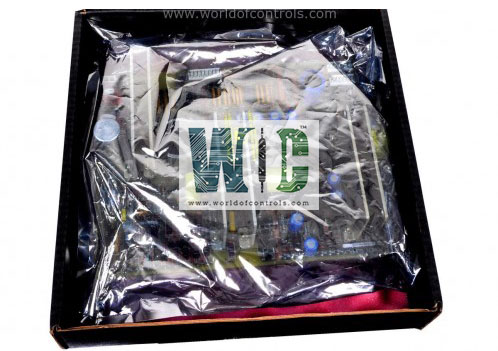
World Of Controls understands the criticality of your requirement and works towards reducing the lead time as much as possible.
IS230SRTDH1A - RTD Terminal Board is available in stock which ships the same day.
IS230SRTDH1A - RTD Terminal Board comes in UNUSED as well as REBUILT condition.
To avail our best deals for IS230SRTDH1A - RTD Terminal Board, contact us and we will get back to you within 24 hours.
Part No.: IS230SRTDH1A
Manufacturer: General Electric
Country of Manufacture: United States of America (USA)
Number of channels: 8
Span: 0.3532 to 4.054 V
Maximum lead resistance: 15 ohm
Product Type: RTD Terminal Board
Availability: In Stock
Series: Mark VIe
IS230SRTDH1A is an RTD Terminal Board developed by GE. It is a part of Mark VIe control system. The board serves as a compact and versatile solution for integrating RTD inputs within control system setups. The board is designed to be compact, making it suitable for installation in various environments. It offers flexibility in mounting options, allowing it to be mounted on either a DIN-rail or a flat surface. This versatility ensures that the board can be easily integrated into different control system configurations.
The WOC team is always available to help you with your Mark VIe requirements. For more information, please contact WOC.
What is IS230SRTDH1A?
It is an RTD Terminal Board developed by GE under the Mark VIe series.
How are system limits monitored for each RTD input on the SRTD board?
Each RTD input with system limit checking based on configurable high and low levels. These limits can be adjusted to generate alarms when exceeded and can be configured for enable/disable and latching/non-latching behavior. The RESET SYS signal is used to reset out-of-limit signals. In Triple Modular Redundancy (TMR) systems, limit logic signals are voted, and the resulting composite diagnostic is available in each controller.
How is the resistance of each RTD checked for accuracy on the board?
The resistance of each RTD connected is continuously monitored and compared with the correct value. If the resistance deviates significantly from the expected range (either too high or too low), a fault is generated, indicating a potential issue with the RTD sensor.
How does the board ensure proper identification and compatibility with the I/O processor?
Each connector on the board is equipped with its own ID device, which is interrogated by the I/O processor board. This ID device contains essential information, including the terminal board serial number, board type, revision number, and connector location. If a mismatch is detected between the ID information and the expected configuration, a hardware incompatibility fault is triggered, alerting operators to potential issues with board compatibility.